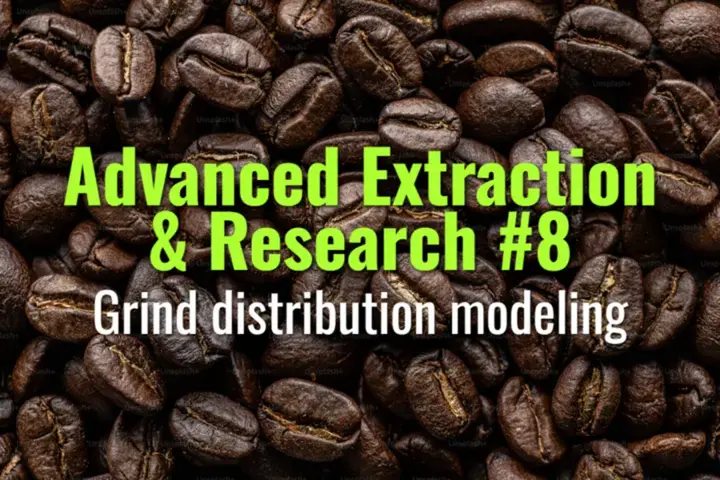Grind distribution modeling
How grind distribution modeling helps researchers and baristas understand particle size variation, fines content, and its impact on extraction and flow dynamics.
- Coffee Basics Nerds
- 2 min read
Article 8 of 12 in Advanced Extraction & Research/

What is Grind Distribution?
- Coffee grounds are never uniform—grinders produce a spectrum of particle sizes.
- Distribution describes how much of the sample falls into different size ranges (fines, median, boulders).
- Strongly affects extraction yield, flow resistance, and flavor clarity.
Measuring Grind Distribution
- Laser Diffraction Analysis: Scientific method for particle size spectra.
- Sieve Analysis: Practical method with stacked mesh sieves.
- Image Analysis: Microscopy or optical scanners.
Modeling Approaches
- Log-Normal Distribution: Commonly used; grind sizes cluster around a median with long tails.
- Bimodal Distribution: Many grinders produce two peaks (fines + larger particles).
- Statistical Metrics: D10, D50, D90 values (sizes at 10%, 50%, 90% cumulative mass).
Why It Matters
- Fines: Extract rapidly, increase bitterness, clog flow.
- Boulders: Extract slowly, may leave sour or weak flavors.
- Uniform Distribution: Yields cleaner, more predictable brews.
Research Insights
- Espresso’s resistance curve is heavily influenced by fines migration.
- Filter brewing shows clearer correlation between particle spread and drawdown stability.
- Modeling helps predict channeling risk and optimize grind settings for different brew methods.
Practical Implications for Baristas
- Adjust grinder burr alignment to minimize bimodal spread.
- Recognize trade-offs: some fines are necessary for body and crema.
- Use grind distribution data to tune recipes (e.g., tighter spread for clarity, looser spread for texture).
Summary
Grind distribution modeling quantifies how particle size variation shapes coffee extraction. By understanding and controlling fines, boulders, and spread, professionals can fine-tune grind settings for better consistency, balanced flavors, and optimized brewing performance.